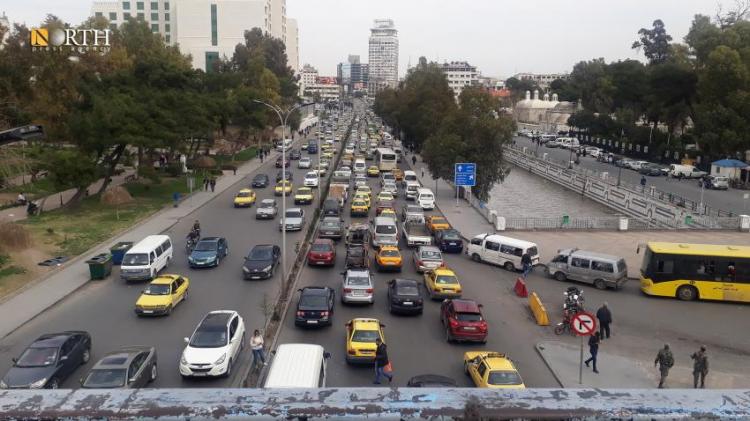Damascus – North-Press Agency
Ahmad Kanaan
Once the Syrian government decided to restart public transport and allow movement between rural and urban areas, the traffic choking the streets and suburbs of the capital Damascus and the crowds on public transport returned.
Over time, fewer people wear protective devices such as masks and gloves as the crowds in public transport lightens at half past seven of the curfew period.
Anxiety returns
Worker Waffa al-Muhammad said that "the decision eased the burden of taxi transportation that used to burden us and cost us a lot because there were no alternatives. On the other hand, the decision has revived anxiety for ourselves and our children when riding in crowded public transport."
Law student Hevin Hojo described the decision to allow the move and then reverse it it as "a big contradiction."
"If we are packed into public transport, the curfew from 7:30 PM to 6 AM will not work," she added.
The Syrian Ministry of the Interior released a memo allowing movement between the countryside and the city starting from the second of May, preceded by a declaration allowing movement between the governorates on April 30th and the 1st and 2nd of May, and then blocked it.
On the 10th of this month, public and private mass transport returned to work inside governorates for transportation between urban and rural areas, after a break of about two months, while keeping the curfew between governorates.
Two days earlier, the government team to combat coronavirus decided to resume all public and private sector mass transport, tourist transport company buses, and unified transport buses, including transportation between urban and rural areas for three months starting from the 10th of this May, with commitment to the health and safety requirements that limit overcrowding and achieve physical distancing.
Syrian social media pages were full of sarcastic comments such as "corona moves only at night" and "corona never rides public transportation," questioning the importance of the night curfew as long as people are gathering in large numbers in public transport by day.
Damascus resident Sara Zaher al-Din said that "despite the population's knowledge of the dangers of being infected with coronavirus due to overcrowding, poor living conditions force them to ride public transport, so they expose themselves to this risk."
She clarified that these procedures are useless and affects people's lives negatively, increasing the suffering of those people who primarily live in bad conditions due to high prices.
Resident Rola Masoud explains that the ban on movement between rural and urban areas has not been strictly enforced.
"The danger of allowing movement between rural and urban areas is that people have entered rural areas from other governorates through illegal crossings and now can move to cities. "This is something of greater concern than at the beginning of the pandemic," Masoud said.

